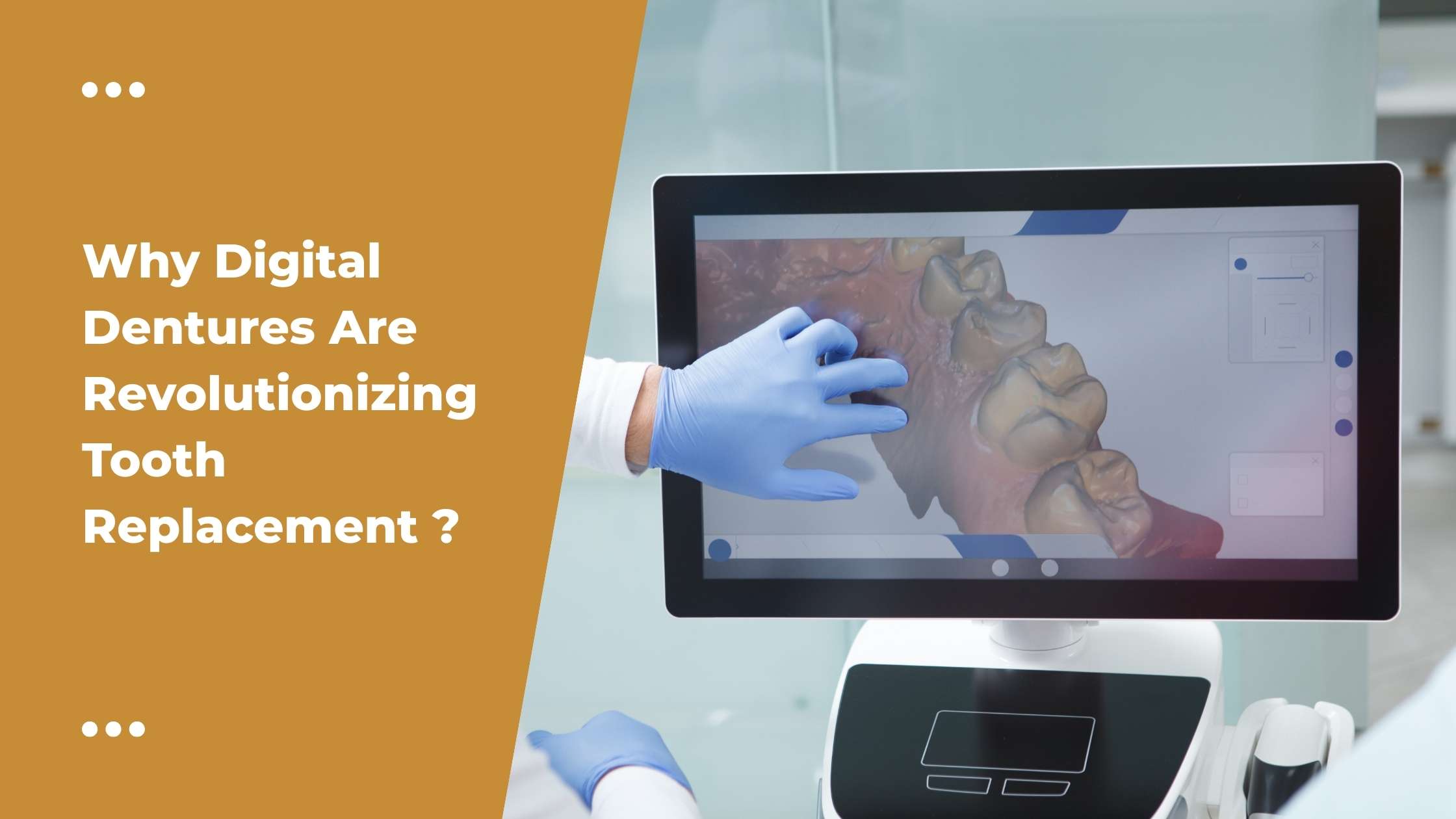Why Digital Dentures Are Revolutionizing Tooth Replacement ?

Dentistry has always evolved with technology, but few innovations have had as profound an impact on prosthetics as digital dentures. Unlike conventional dentures that rely on wax models and manual adjustments, digital dentures are created using advanced digital workflows.
These include intraoral scanning, computer-aided design (CAD), computer-aided manufacturing (CAM), and 3D printing or milling. The result is a denture that is not only more accurate but also faster to produce and easier to reproduce if needed.
What Are Digital Dentures?
Digital dentures are removable dental prosthetics manufactured through a fully digital process. Instead of hand-carving wax patterns and relying on plaster models, dentists and technicians use digital scans of a patient’s mouth.
These scans are then processed using CAD software to design a denture model, which is manufactured through either:
- Milling – carving the denture base and teeth from pre-formed resin blocks.
- 3D printing – layering resin material to form the denture base and teeth.
This digital approach ensures precision, better fit, and streamlined workflows compared to traditional denture-making methods.
Advantages of Digital Dentures
- Accuracy and Fit – Digital scans reduce human error, providing dentures that closely match the patient’s unique anatomy.
- Time Efficiency – Patients often receive their dentures in fewer appointments compared to traditional methods.
- Customization – The digital workflow allows for personalized designs, improving the aesthetic appeal and natural look of dentures.
- Durability – High-quality materials used in 3D printing and milling enhance the strength and longevity of dentures.
- Stored Data – Since the denture design is saved digitally, replacements or adjustments can be made quickly without starting from scratch.
How Do Digital Dentures Differ from Traditional Dentures?
Traditional dentures involve physical impressions, wax try-ins, and several clinic visits to refine the fit. In contrast, digital dentures streamline this process. Once the scans are taken, a digital file is created, allowing the dentist and lab technicians to collaborate virtually. This reduces the trial-and-error phase and makes the process less time-consuming for patients.
Another difference lies in reproducibility. If a traditional denture is lost or damaged, the whole process must be repeated. With digital dentures, the saved design file can quickly reproduce the exact model, saving both time and cost.
Growing Popularity of Digital Dentures
With the aging population worldwide, the demand for dentures is rising. According to the World Health Organization, nearly 30% of people aged 65–74 have no natural teeth.
As awareness about digital dentures grows, more patients are opting for this technology-driven option. Dental clinics across the globe are adopting digital workflows to meet this demand, making dentures more accessible and efficient than ever.
Patient Experience with Digital Dentures
One of the most important benefits of this innovation is the improved patient experience. Patients often find digital dentures lighter, more comfortable, and aesthetically appealing.
They also require fewer adjustments, which means less discomfort during the adaptation period. For many, the digital process restores not just their smile but also their confidence and quality of life.
Challenges and Future of Digital Dentures
Although highly beneficial, digital dentures also face challenges. The cost of advanced equipment, training requirements for dentists, and the initial price for patients can be higher than traditional dentures. However, as technology becomes more widespread and affordable, these barriers are expected to reduce.
Future advancements may include AI-assisted denture design, enhanced biocompatible materials, and even same-day denture fabrication.
Why Digital Dentures Are a Step Toward the Future?
Before we conclude, it’s important to understand why this innovation matters in the broader landscape of dentistry. Digital dentures don’t just represent a new way of making dentures—they reflect a larger shift toward precision dentistry, where patient comfort, accuracy, and long-term outcomes are prioritized.
As technology continues to evolve, these dentures will likely integrate with other digital dental solutions, such as implants and orthodontics, offering patients a fully digitized oral care experience.
Conclusion:
Digital dentures are transforming the way we approach tooth replacement. They offer unmatched accuracy, efficiency, and comfort compared to traditional dentures, making them an excellent choice for patients who want modern solutions for oral health.
While challenges remain, their growing popularity and future potential highlight their importance in dentistry.
At Sakthi Smile Craft, patients can explore more about digital dentures and how this technology is helping create natural-looking, durable, and comfortable smiles.
Their approach reflects how dental care is moving toward innovation while prioritizing patient comfort and satisfaction.
